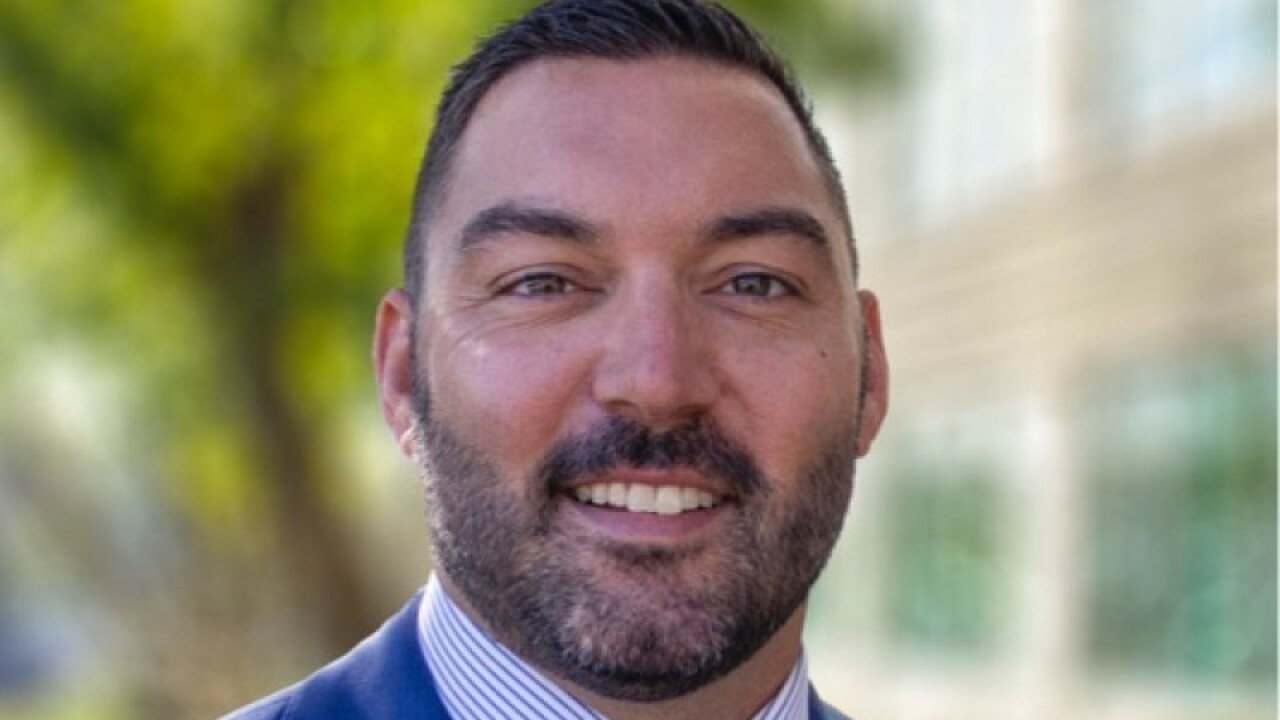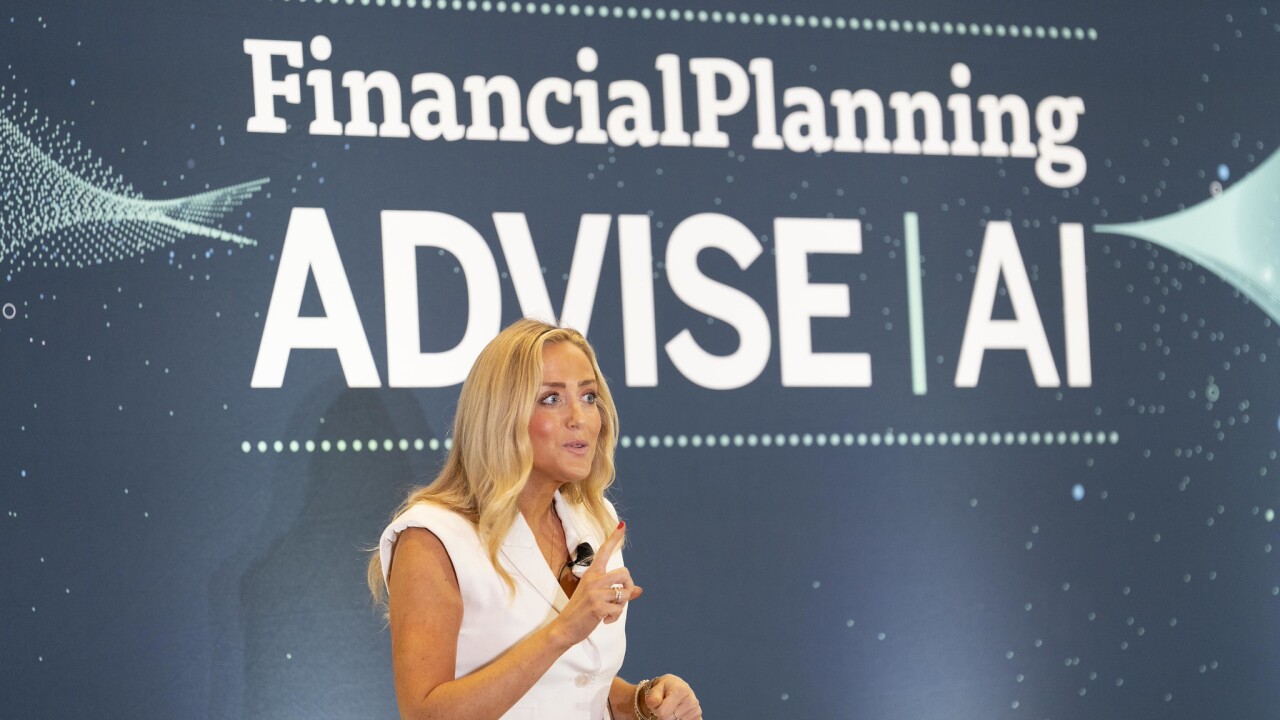Though the Department of Labor's fiduciary rule has been delayed, its impact on retirement planning needs and products has already been felt.
Top executives at eMoney Advisor, Fidelity Investment's enterprise software arm, say their clients have made a number of changes to their retirement offerings in anticipation of the rule, and were likely going to stick with them even if the rule is rolled back or watered down.
"Even if the DoL rule goes away, the fiduciary framework holds," says eMoney Advisor CEO Ed O'Brien. "That is, how do you bring planning more into your practice so that you are acting in the best interest of the client and being able to show it to them and be transparent?"
The custodian's software offering now aggregates data for over 46,000 clients, O'Brien notes, and hopes to embed itself even further within those clients' operations. That's why it is launching a new division, eMoney for Enterprise, which is aimed at helping firms gain tech-driven wealth management capabilities, such as data analytics.
Offering compliance support around the DoL rule is one aspect of the suite of services, which will continue despite uncertainty over the rule, says Lisa Graham, product manager at eMoney Advisor.
"Overall, we were already in the space of helping advisers and firms acting with that responsibility," Graham says.
Acknowledging the success of Vanguard's hybrid digital wealth management offering, eMoney Advisor's new enterprise platform will offer a robo adviser, called AMP, which was co-developed with Fidelity.
O'Brien and Graham spoke with Money Management Executive about the launch of the enterprise platform and contending with DoL-related disruption.
An edited transcript of the coversation follows.
What does the delay and potential derailment of the fiduciary rule mean for eMoney Advisor?
Graham: As a planning software, we're already in the business of helping advisers act as fiduciaries. When the DoL rule came up, it was not a disrupter for us. We were already in that space. We were already helping our advisers. We didn't have to do much to realign to help.
The things we were already planning in our road map — our enterprise efforts, adviser assurance and product rollout — are all helping advisers at firms with their fiduciary responsibilities.
There are parts and pieces related to the DoL rule that if they don't come to fruition, we'll probably stand back. Things around BIC contracts may never come to light. We could easily pull back on that, but overall, we were already in the space of helping advisers and firms acting with that responsibility.
Do contingencies need to be put in place in case the rule is implemented?
Graham: Speaking with customers and prospects, we know they have already committed and gone through the due diligence. They have peeled back the onion and they're seeing what's going on in their business. They have made refinements. Those things are going to stick. They have already done it, they have got the visibility and a lot of them appreciated that visibility that they were forced to take. I don't see anything peeling back from that. Again, I think it's more the initial requirements at the low level that we will see implemented.
O'Brien: Early on there was the impetus to try to come up with a technology solution set to DoL. We sat around tables like this in Pennsylvania saying, "By planning, you are acting in the best interest of the client, so why do we want to take what we have done for years, and all of a sudden build a product around it?"
Instead, we decided to reinforce the fact that we have ways that we believe that advisers can create fiduciary framework, and that's what we call it. These are things like evaluate, you plan, you make sure you make the adjustments that changes and you revisit it. Those are all things in some way, shape or form we are doing through the process of planning.
We've looked at where there are gaps specific to DoL regulation, or any anticipated regulation. The reason I love that framework is that it's not specific to any one regulatory requirement. If the industry adopts another fiduciary standard, and not the DoL's, then the framework will still work. We may have to put in a different checklist or different requirements to meet the standard, but our process — our framework — does not go away.
A number of firms touted new DoL compliant tools. Were they just trying to take advantage of the moment?
O'Brien: I think more of those firms were targeted solutions to fix one element or one area of the regulation. They sought to help you to comply with one area.
When you step back and think about what you have to do to act in your clients' best interest, it's not any one thing; it's about starting at the very beginning.
So, how you even gather the information to understand whether you are doing a good job in the big picture? Well, we do that. We have data aggregation. Clients and advisers can create a plan that's based on the full picture of their wealth and not just what I happen to be managing.
A good area where there were specific requirements around things like rolling out of a 401(k), that's not information we had at eMoney. So, we went and looked around in the industry for who has that information.
When an adviser makes that decision they are pulling in the right data elements from that particular 401(k) plan and they are making a prudent decision around whether or not it makes sense to roll them out. It was a combination of things we would add in, but also very specifically partnering where it made sense.
Even if the DoL rule goes away, again, the framework holds. That is, how do you bring planning more into your practice so that you are acting in the best interest of the client and being able to show it to them and be transparent? I think most advisers would tell you that they have been acting in the best interest of their client, but I am not sure exactly how to show that to someone auditing that claim, or to their home office or their end client.
What we are able to do now is, if you are a home office, you have the tools to do the work that you can audit, you can see what's going on and you can see what advisers might be missing that we believe are important data on a client to support the fiduciary framework.
When the original rule proposal was made, did you decide then that there was no need to change your framework?
Graham: It took us a few of months to come to the conclusion as to how we wanted to move forward, but we spent those first few months talking to customers and prospects and talking internally about what the best path was for us.
After that period of time, we were all pretty confident that we were on the same page to continue down the path we were on, but maybe add in a few enhancements to those framework legs where needed.
O'Brien: I think you are going to find that the framework is nice because if the DoL rule doesn't go through in the current state, we don't have to follow through on all of the pieces, but if something else comes along, we can plug in others.
So then are these features in limbo until the rollout is completed?
Graham: No, we already have an office analytics platform. That is available to our customers. To help with fiduciary responsibility we built a few additional charts to give that visibility into the client base.
One in particular asks how well are our clients collecting facts across the best interest categories — assets, liabilities, expenses and risk? If that visibility is given to an adviser, you can look across all clients and identify whether you are missing liabilities. The firm has visibility across all advisers and clients.
We don't propose products. We are doing what a lot of our integrators do to support them and their data needs. That's an ongoing discussion, but we are very in tuned with how our partners are positioning around DoL so that we have the full story to help with implementation of documentation rationale across the full adviser and client lifestyle.
Adviser assurance is another product that we are delivering to help with the compliance visibility across the firm. It helps compliance folks in these firms to see how data is changed and helps to make sure they have accountability across the system when that happens.
The industry is gravitating toward the hybrid robo model. What's the role for eMoney in assisting advisers who adopt this model?
O'Brien: Unless an adviser has every client that looks identical, the hybrid is required. When you start looking across different generations and different perspectives on live, then you need to be able to offer a digital model, for those who prefer that, versus my more traditional in-person model. Those have to coexist and I think from the eMoney point-of-view, the adviser needs to support every point in between, which is exactly how much digital and how much in-person do they want.
We are in a sector where a lot of what's coming our way these days, and also supports the need for the enterprise model, is just a more scalable advice proposition. If you think about the platforms out there today, planning tools tend to be anchored in either the very simple end of the spectrum or the very high end of the spectrum, and that will probably not work in the long run.
Your clients need to be able to take the very simple pieces of planning at the very early stages of accumulation — just thinking about retirement or 401(k) — that's pretty targeted needs analysis and we have those tools available in the platform today. However, as life gets more complex and planning needs more important, you'll want the power of cash flow so that you can do a good job on the distribution phase.
In our platform, it's not just the hybrid of in person versus digital; it's also the hybrid of high-end planning and a more targeted needs analysis. Again, I would emphasize that any end of the spectrum is important for an adviser to go forward.
We are unique in that we can do both of those; support the pure digital model, support the pure traditional model (you come into my office and we will print you a 100-page report because that's the model) and also being able to break it down to simple components of planning to the most complex, and then we support everything in between. Hybrid is there because advisers need to evolve to support both ends of the spectrum and everything in between.
We serve 46,000 advisers and financial professionals out there, and so you can't pick one spot and be successful. There are lots of folks that would say each adviser is a snowflake.
Coming back to the fiduciary framework, I think what's really come around is that there is actually a point of view and a best practice to implement some of this. That's probably the strongest thing that came out of the fiduciary framework for us — less about a new product, other than we have a point of view that our best practice is the best way to do this. If you follow our framework then you will probably be okay.
It's the same thing here — if you think you are going to survive on the traditional in-person practice, printing out 100-page financial plan for every client, that might last another few years, but you are probably not going to attract the next generation of investor.





